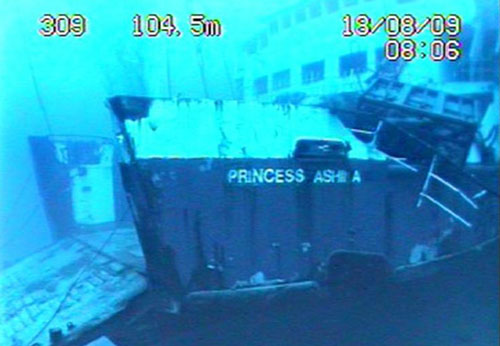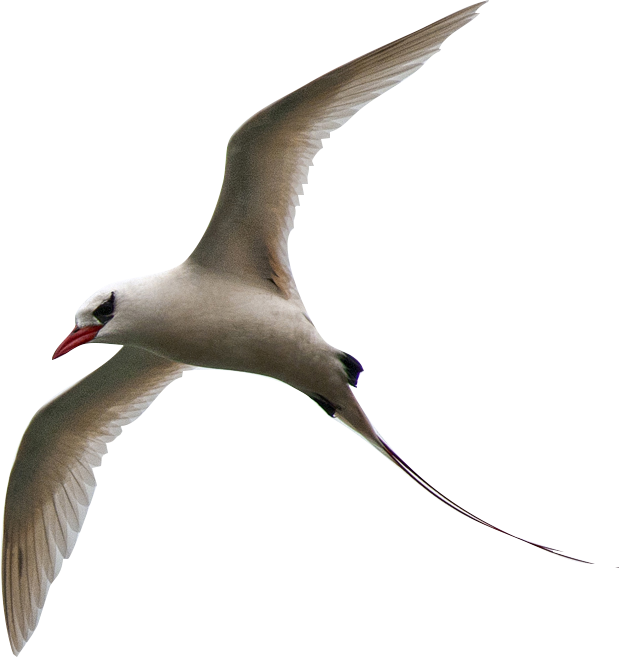
Earlier this year, Tongan MP and pro-democracy leader ‘Akilisi Pohiva made a drastic prediction about the nation’s worst tragedy since the 1918 flu epidemic.
“This will spell the end of the current monarchial government,” he told New Zealand-based T-News. Seventy-four lives – which, out of a total population of 104,000, is equivalent to over 3201 New Zealanders – were lost when the MV Princess Ashika ferry sank to the bottom of the ocean on August 5 last year.
Pohiva made the statement after several high profile officials at investigation hearings admitted to the lack of due diligence in ensuring the MV Princess Ashika ferry was safe for public use.
Other evidence heard described the misuse of public funds, and an alleged “culture of fear” that prevented employees from speaking up to their superiors, as described by Ports Authority manager Lupeti Vi and former Attorney General ‘Alisi Taumoepeau.
Scathing report by Royal Commission of Inquiry
Since then, a report by the Royal Commission of Inquiry set up to investigate the causes of the disaster, has slammed the government, the Shipping Corporation of Polynesia Ltd. (SCP), and the Ministry of Transport for failing in their public duties.
The report also cited the high loss of life due to failure of the crew to take proper safety measures when the ship was in danger.
The Commission submitted their final report to the Tongan Head of State, King George Tupou V Thursday morning (March 31).
Government tries to put things right
The report said the “evidence as to the unseaworthiness and appalling state of the vessel is overwhelming and compelling.” (Download full report)
“It was scandalous that such a maritime disaster could ever have been allowed to occur. It was a result of systemic and individual failures.”
Highlighted was the lack of any official due diligence in purchasing the ferry, and the lack of those in power to do their jobs properly.
Meanwhile the Tongan government has rushed to bring in a TOP$5 million interim replacement ferry from Malaysia which begins operation this month.
The new vessel was funded jointly by Australia and New Zealand governments, with maintenance and operational costs to be carried by the Tongan government.
In early March, six months after the disaster, donations amounting to just over TOP$1 million was distributed to the victims’ family and the survivors.
National tragedy
On the evening of August 5, 2009, the MV Princess Ashika set out to sea from the main island Tongatapu, headed to the outer Ha’apai island group carrying 96 passengers, 32 crew and 110 tonnes of cargo.
Just before midnight local time, the ship sent out a mayday call from its position 86km north-west of Tonga’s capital, Nuku’alofa.
According to eyewitnesses, water started seeping into the lower decks of the ferry, capsizing the vessel within minutes.
But the final report by the Commission said that the vessel was in peril “long before”.
The ship took 74 lives with it, including all the women and children on board. Thirteen were under age 10, three of whom were infants. The eldest, Fifita Taufo’ou, was 77.
Entire families were killed, including a couple who drowned side by side with their two young daughters, ages six and three, and another couple with their two month old son. (See full list of victims)
Five foreign nationals, including a New Zealand resident originally from Scotland, Daniel McMillan, and a New Zealand citizen from Niue, Sisilia Puleheloto, also died.
Fifty-four men survived.
“The tragedy is that they were all easily preventable and the deaths were completely senseless,” read the report.
PM, Transport Minister defend boat’s safety
Days after the catastrophe, TV3 in New Zealand reported that the King of Tonga continued on an extended holiday trip to Europe, hours after being notified of the incident.
The Prime Minister, Feleti Sevele, justified the decision, saying the trip was already planned before the sinking occurred.
He also told TV3 that the ship “was tested, it passed [and] therefore it was able to get the seaworthiness certificate plus the marine insurance cover.”
He said that the sinking was more likely to do with peculiarities in the tides and sea currents.
“I don’t think it was the ship’s sea worthiness that was the cause,” he said.
Minister of Transport at the time, Paul Karaulus resigned six days after the ferry went under, stating that it was in the interest of full transparency in the investigation.
“We are confident that the actual (maritime safety) requirements internationally are met and that is subject to audit,” he told TVNZ.
Captain of the vessel, Makahokovalu Tuputupu also claimed the ship was in “good condition for sailing” in an interview with T-News broadcast last month.
However, overwhelming evidence heard in the inquiry indicated otherwise.
Royal Commission of Inquiry hears evidence
The Commission of Inquiry sat for 54 days, beginning last October and adjourning indefinitely on March 12.
The Commission was made up of Justice Andrew Warwick as Chairman, naval architect and engineer, Richard James, and master mariner, Michael Handfield. Assisting counsel to the Commission was Manuel Varitimos.
During the hearings, the Inquiry was told of the gross dilapidation of the ferry, with photographic, video, and oral evidence of severe corrosion, gaping holes in the walls and deck, worn out safety rails, lack of alarm bells or warning signals and a broken gate. Full transcripts, updated regularly, are available to the public.
Amongst other highlights at the inquiry:
Secretary of SCP Ramsay Dalgety, called the Ashika a “rust bucket” in light of the evidence. He blamed government for buying the vessel and said that he “just signed the checks”. It was also revealed that under his chairmanship, another publically funded enterprise – the Electricity Commission – spent more than TOP$1.2 million from Jan. 2009 to Jan. 2010, including funds for his international first class flights and accommodation. Police charged Dalgety with perjury.
SCP Chair and former Attorney General ‘Alisi Taumoepeau and SCP Director Tevita Haukinima both acknowledged the lack of due diligence in purchase of the vessel. Minister of Finance Afu’alo Matoto admitted that the money used to buy the ferry – FJD$600,000 – was taken from Chinese aid funds originally earmarked for satellite development. He said he was “misled” by former Transport Minister Paul Karalus when he approved the payment.
Former manager for Ports Authority Lupeti Vi said in his ten years of service, he has never had confidence in the former Transport Minister. Early during the trial, the Kele’a newspaper published a leaked letter from Vi to the Australian PM claiming late-night welding was carried out on the ferry up until the night before the fatal voyage. It claimed this was to avoid public suspicions about the ship’s seaworthiness. Vi also told the inquiry about an alleged bribery attempt by Tu’i Uata, a well-known businessman and son of pro-democratic MP and local shipping mogul MP ‘Uliti Uata, who was said to have offered Vi TOP$5,000 in a brown envelope to ease clearance for the Uata vessels to dock at the wharf. Vi said he refused.
Prime Minister Feleti Sevele maintained that individual failures, not bad governance, caused the disaster. In his final statement to the Inquiry he criticized the Assisting Counsel’s line of questioning and told him: “You may be an excellent counsel in Australia, but when you are in the Kingdom of Tonga, please try to understand our constitution and show some respect for our monarch, for our government, our people and our culture.”
Head of the government-owned public enterprise, SCP, John Jonesse claimed the vessel was old but “well-maintained”. Jonesse had brokered the purchase of the vessel from a Fijian company, which was endorsed by Minister of Transport Karalus, then passed by Cabinet – before any approval from the government’s procurement committee charged with overseeing large state purchases. There was no proof of the ship’s sea worthiness. Jonesse also allegedly forged signatures on some of the documents. He was later charged by Tongan police with manslaughter by negligence, sending an unseaworthy ship to sea, and forgery. Jonesse attempted to leave the country last night but was stopped.
Justice Warwick censured the PM for the comment.
According to ‘Akilisi Pohiva, the PM later went on national Tongan television, chiding TV Tonga staff for describing him as “red in the face” and flustered during questioning.
Charges filed
Since the tragedy, Tongan police have been conducting a separate investigation, and have charged three people and a corporate body with manslaughter by negligence, in relation to the death of Vae Fetu’u Taufa (22), one of only two recovered victims.
The other recovered victim was New Zealand resident Daniel McMillan.
The charges were laid last week against the Shipping Corporation of Polynesia Ltd. (SCP), which operated the vessel, SCP Managing Director John Jonesse, ship captain Makahokovalu Tuputupu, and Acting Director of Marine and Ports Viliami Tu’ipulotu.
They have also been charged with sending and taking an unseaworthy ship to sea.
Jonesse was also charged separately for forging documents pertaining to the ship’s purchase; Lord Dalgety was charged with perjury; and Tu’i Uata with bribery.
Victims
Immediately after the sinking, families of those lost at sea camped daily outside the SCP office seeking answers.
The New Zealand navy sent personnel and specialized equipment to search for the sunken ferry and for any victims that could be recovered.
The search finally halted on August 21, and Tonga Police Commander Chris Kelley announced that it would cost millions for any further efforts, although navy divers had found the location of the vessel and salvaged digital photographs of the wreck.
Crown Prince‘Ulukalala Lavaka Ata called for “closure”.
“I pray, and appeal to you all – that now is the time to put aside differences. Now is the time to work together,” he said at a special memorial service.
The families ended a 17 night vigil, and on August 24, a mass funeral was held for those lost in the tragedy.
Small boats carried passengers out to the approximate location of the wreckage, where mourners threw garlands into the water along with a coffin shaped memorial stone etched with the victims’ names.
Matangi Tonga reported a crowd of about 300 at the ceremony, joined by Princess Regent HRH Princess Pilolevu Tuita, the Prime Minister, Hon. Dr Feleti Sevele, government officials, and foreign diplomats.
Kele’a newspaper reported an extremely emotional atmosphere, with many loud wailings and cries at the gathering.
Relief funds
The Tongan government set up the Ashika Relief Fund to receive donations for the survivors and the victims’ families. Governments from around the world – including New Zealand, Australia, China, Israel and the UK to name a few – smaller organizations such as St. John’s College in Fiji, as well as individuals offered their assistance.
On March 5 the fund, amounting to TOP$1,061,908.61 was distributed amongst the victims’ families in an emotional ceremony. TOP$12,980 was provided for each victim and TOP$2,000 for each survivor.
Previously, the Tongan government had distributed TOP$2,000 per victim amongst their families.
The Royal Commission of Inquiry’s report will be available to the Tongan public next Tuesday.
See also, Josephine Latu’s Pacific Scoop report: Damning Inquiry report says failure of authority at the heart of Ashika disaster



